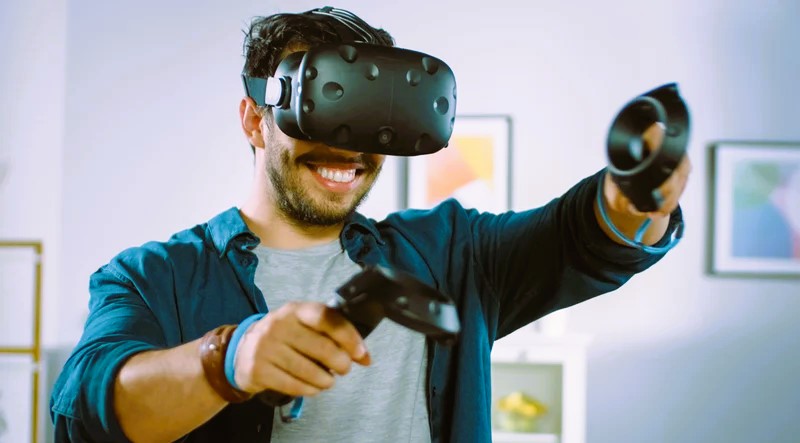Virtual Reality (VR) gaming offers an immersive experience like no other, allowing players to step into digital worlds and interact with them in ways that traditional gaming can’t match. However, the quality of a VR gaming experience is heavily reliant on the performance of your hardware and, more importantly, your internet connection. One of the most crucial steps in optimizing your VR gaming experience is conducting speed tests. These tests ensure your system has the necessary bandwidth, low latency, and minimal jitter required for seamless VR gameplay.
In this article, we will explore why speed tests are vital for VR gaming, how they impact your experience, and what kind of results you should be looking for.
What Makes VR Gaming Different?
VR gaming is distinct from traditional gaming because it places players directly into a virtual environment. Unlike conventional games that display images on a flat screen, VR gaming requires rendering complex, high-quality 3D graphics in real-time, often with a high frame rate to avoid motion sickness. The nature of VR demands smooth interaction, precise tracking of movement, and zero latency to create an immersive and enjoyable experience.
The key factors that can affect VR gaming performance include:
- Frame rate: High frame rates (typically 90Hz or higher) are necessary to prevent motion sickness and ensure smooth movement within the game.
- Latency: High latency can cause delays in your movements and the game’s responses, ruining the immersive experience.
- Bandwidth: Streaming VR content (like with cloud gaming) requires significant bandwidth to transmit high-definition, low-latency video.
Why Speed Tests are Essential for VR Gaming
Speed tests are vital tools for diagnosing and ensuring that your internet connection can handle the demands of VR gaming. In a VR environment, even small delays or interruptions can have a huge impact on the user experience, leading to lag, buffering, or distorted visuals. Did you like the article? Read also about The Future of Gaming.
Let’s break down the specific reasons why speed tests are critical for VR gaming:
1. Bandwidth for Streaming High-Quality Content
VR games, especially those played through cloud gaming services, require substantial bandwidth to stream high-quality visuals. VR content is rendered in real-time and often includes stereoscopic 3D imagery, requiring significantly more data than traditional 2D games. If the bandwidth is insufficient, you might experience lag, low-quality visuals, or stuttering, all of which break the immersion.
Minimum Requirements: For VR gaming, especially for streaming VR content, a minimum download speed of 25 Mbps is recommended. However, for smoother gameplay and higher-resolution VR content, speeds of 50 Mbps or more are often ideal.
2. Low Latency for Responsive Gameplay
Latency, or ping, is the time it takes for data to travel from your device to the server and back. In VR gaming, even slight delays in response time can disrupt your interaction with the virtual environment. If there’s a delay between your movements and the in-game actions, it can lead to motion sickness, disorientation, and an overall unpleasant experience.
Ideal Latency: Latency should be as low as possible. Ideally, you should aim for a ping under 30 ms to ensure fluid, responsive gameplay. Anything over 100 ms can result in noticeable lag, leading to a poor VR experience.
3. Stability and Consistency
A consistent internet connection is crucial for VR gaming. Fluctuating speeds, known as jitter, can cause spikes in latency and unpredictable performance. This is particularly harmful in VR, where consistency is key to maintaining immersion.
Jitter Tolerance: You should aim for low jitter values—ideally under 30 ms. If jitter is high, it can lead to unstable performance, causing visual distortions or interruptions that can break immersion and lead to discomfort.
4. Testing Your Local Network Setup
While VR gaming requires a stable internet connection, the setup of your local network also plays a significant role. If you’re using Wi-Fi, the speed and reliability of the connection can fluctuate due to interference or distance from your router. Speed tests help determine whether your network is capable of handling the demands of VR gaming.
Wi-Fi vs. Wired Connection: For the best performance, using a wired Ethernet connection is recommended. Wi-Fi can be more prone to interference and slower speeds, leading to lag and buffering. By conducting a speed test, you can determine whether your Wi-Fi connection is stable enough or if you need to consider a wired connection.
5. Optimizing Your VR Setup
A speed test allows you to analyze the state of your internet connection before diving into a VR game. If you’re experiencing slow speeds or high latency, you can make adjustments, such as upgrading your router, switching to a higher-speed plan with your ISP, or troubleshooting other potential issues like background apps consuming bandwidth.
Speed Test Recommendations: Before starting a VR gaming session, it’s a good practice to run a speed test. If you’re experiencing performance issues, testing your network and identifying weak points allows you to troubleshoot and optimize for a better gaming experience.
What to Look for in a Speed Test for VR Gaming

When performing a speed test for VR gaming, there are a few key metrics to keep an eye on:
- Download Speed: VR games, especially when streamed, require high download speeds to ensure smooth visuals. For local VR setups, faster download speeds are still essential for updates and downloading games. A minimum of 25 Mbps is a good starting point for basic VR gaming, but for more intensive experiences, 50 Mbps or more is ideal.
- Upload Speed: If you’re playing VR games that involve multiplayer or streaming, a high upload speed is essential. At least 3 Mbps upload speed is recommended for multiplayer gaming, while higher speeds may be needed for streaming or interacting with others in real-time.
- Ping (Latency): The lower the ping, the better. Aim for under 30 ms to ensure a smooth and immersive VR experience. Higher latency may lead to noticeable lag, which can make VR gaming unpleasant.
- Jitter: Aim for jitter under 30 ms. High jitter can cause visual glitches and uneven performance, making it harder to enjoy the game.
In the world of VR gaming, a smooth, responsive, and immersive experience is only achievable with the right internet speed and network setup. Speed tests are essential tools for ensuring that your internet connection can meet the rigorous demands of VR gaming, from maintaining high bandwidth for streaming high-quality visuals to ensuring low latency and minimal jitter for a responsive experience.
Before starting a VR gaming session, always run a speed test to check if your connection is up to the task. By ensuring that you have a stable, high-speed internet connection, you can enjoy a seamless, high-quality VR gaming experience.
For more information on internet speed and performance, visit Wikipedia on Internet Speed.

